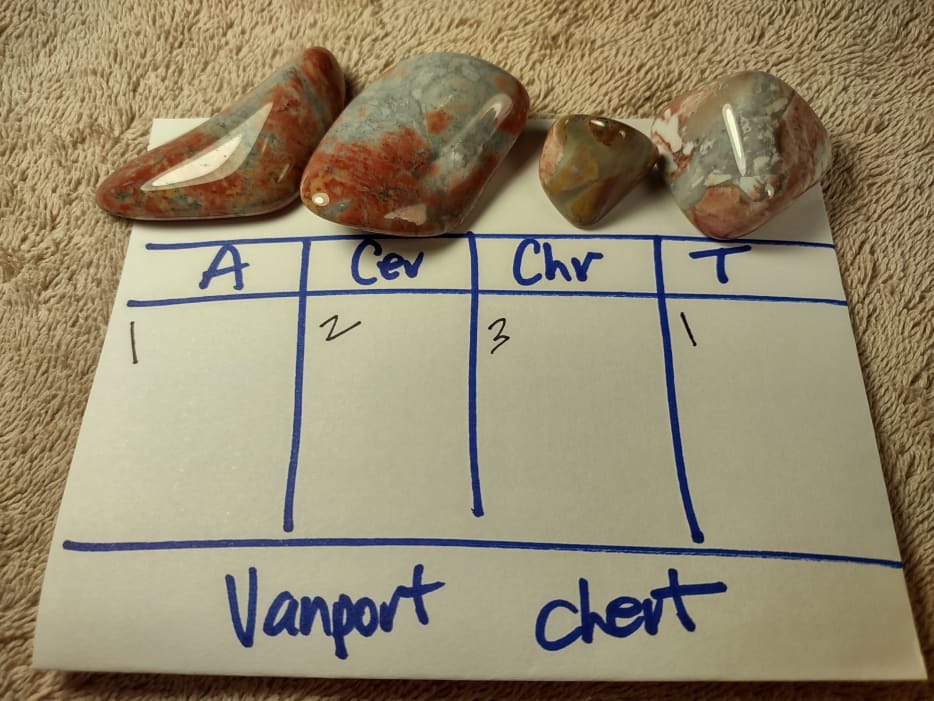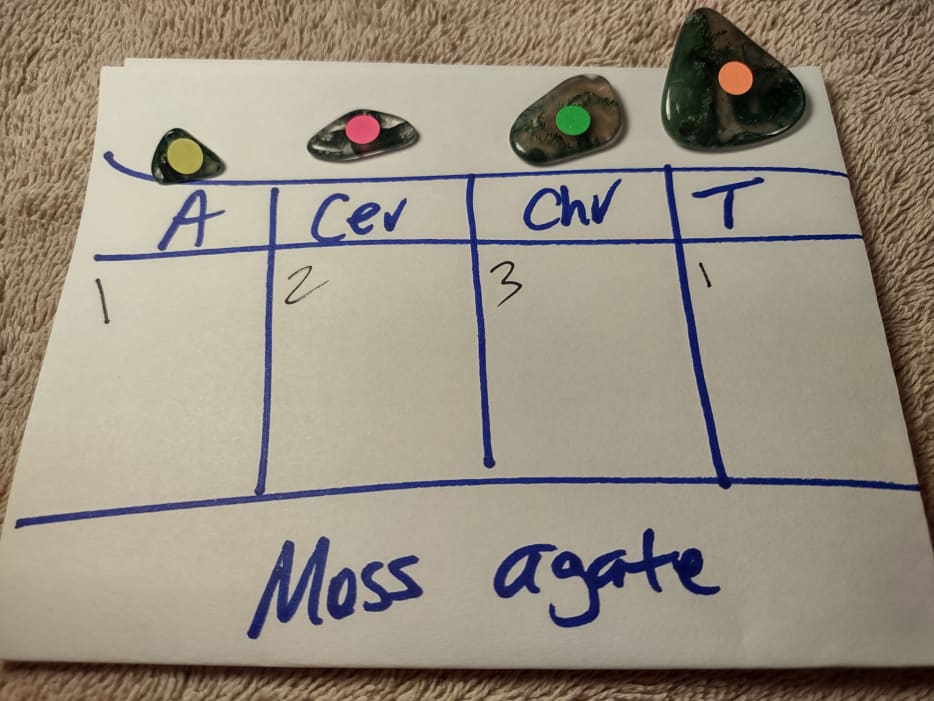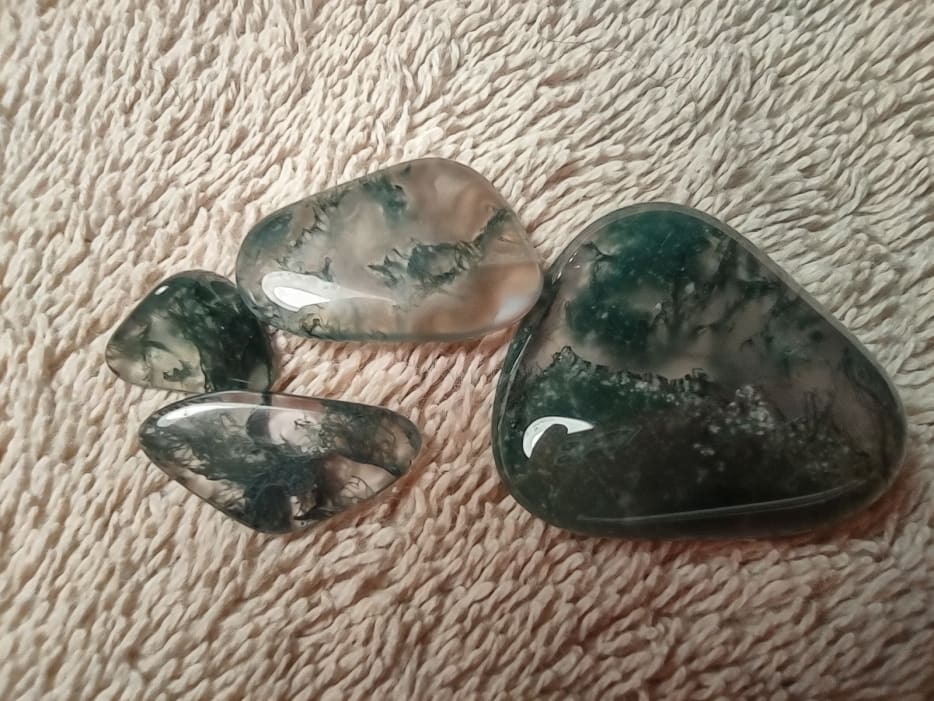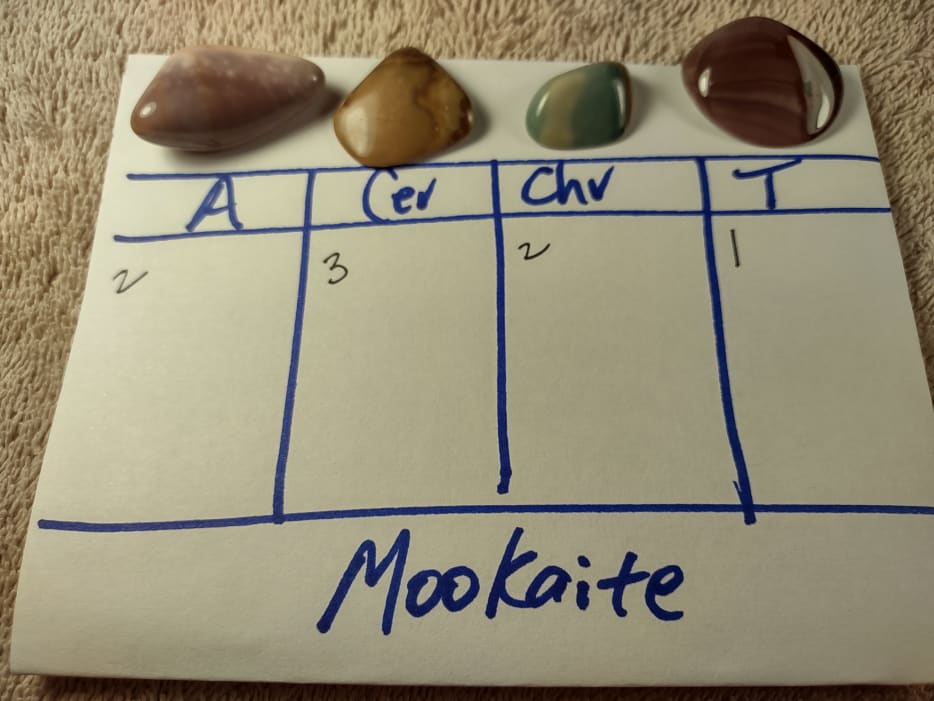|
|
Post by Bob on Jul 12, 2022 22:42:36 GMT -5
|
|
|
|
Post by Bob on Jul 13, 2022 22:35:21 GMT -5
|
|
Deleted
Deleted Member
Member since January 1970
Posts: 0
|
Post by Deleted on Jul 15, 2022 15:33:44 GMT -5
BobLove the chert and moss agate! Where did you get the vanport chert from?
|
|
|
|
Post by Bob on Jul 15, 2022 20:15:35 GMT -5
BobLove the chert and moss agate! Where did you get the vanport chert from? Ashley, it was 2-3 years ago on eBay listed as Ohio Flint Ridge chert or flint. Also can show up as Nether's farm flint or chert. It fractures super easily, and maybe half or more sort of fell apart. But, it's extremely beautiful and I'm glad I tumbled it. Found out spending a lot of time in 220 helped, rather than trying to get in perfect shape in coarse grind before going to 220. |
|
|
|
Post by Bob on Jul 15, 2022 20:20:42 GMT -5
If you Google those rock names and also knapping, arrowheads, etc. you will encounter some mind blowing photos of what some knappers have made from that material. Some has striking blues and greens. Maybe prettiest rocks I've ever seen in USA.
|
|
Deleted
Deleted Member
Member since January 1970
Posts: 0
|
Post by Deleted on Jul 15, 2022 21:42:17 GMT -5
BobI agree, chert is one of my favorites. An underdog for sure! I bought a few pounds of flint ridge flint from Kelly on here. It will go in the rotary next after some Quartz I have in. Really looking forward to seeing how it turns out.
|
|
|
|
Post by Bob on Jul 16, 2022 10:06:23 GMT -5
BobI agree, chert is one of my favorites. An underdog for sure! I bought a few pounds of flint ridge flint from Kelly on here. It will go in the rotary next after some Quartz I have in. Really looking forward to seeing how it turns out. Let me know how it goes. I wish so much some of my pieces had a combo of the yellow/red/green that is so striking. Recently have noticed Jafar jasper, some of which has similarly striking color combos. |
|
|
|
Post by Bob on Jul 16, 2022 12:16:09 GMT -5
|
|
|
|
Post by Bob on Jul 17, 2022 14:39:49 GMT -5
|
|
|
|
Post by thisislandearth on Jul 17, 2022 16:22:08 GMT -5
Bob, Quick! - we need to corner the market in stannous oxide!  What an effort on your part - well done! |
|
|
|
Post by Bob on Jul 19, 2022 10:29:23 GMT -5
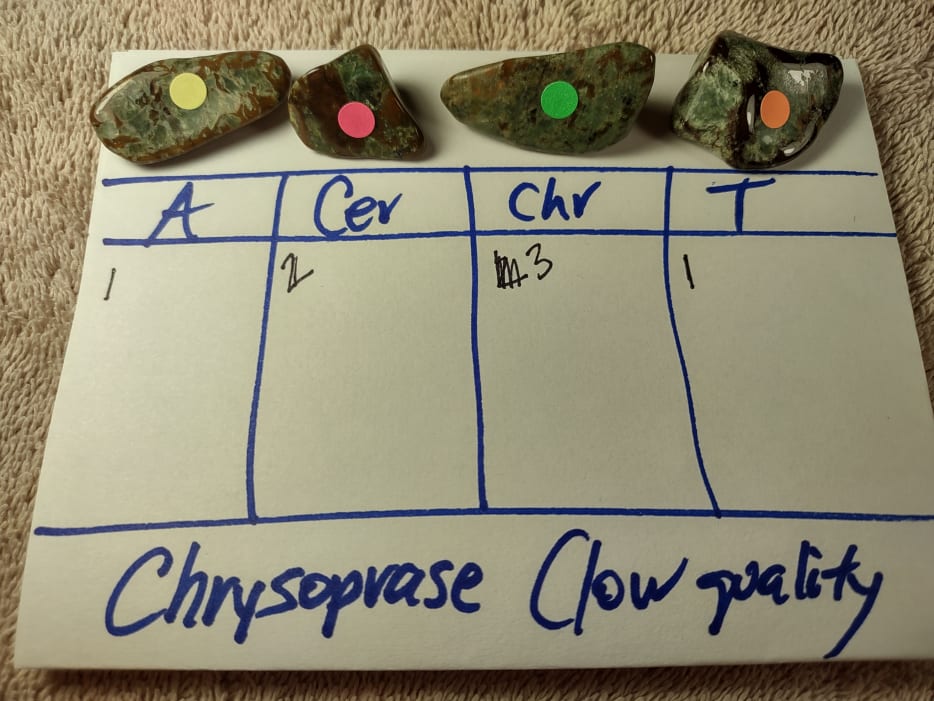   I have a client from Poland and he has shown me super high gem quality examples of this mineral that he dug himself. The other chrysoprase in this test, isn't near of that quality, but is only of moderate quality that I bought somewhere on internet. This is terrible quality and is often listed online as chrysoprase. I bought some of it once just out of curiosity. It's tumbles terribly seeming to be a combo of something hard and something soft. Even polished, I kind of dislike this material and will probably give it all away. Why I included it in this test I have no idea. However, perhaps there is a blessing to that because it shows that T not only seems to be coming out ahead on most materials, but even on this weird uneven surface material (A did just as well). By the way, in case it was never mentioned, my goal isn't to find the best polish to use overall all the time. It's only to find the best polish for each type of rock. |
|
Deleted
Deleted Member
Member since January 1970
Posts: 0
|
Post by Deleted on Jul 19, 2022 15:10:17 GMT -5
BobThank you Bob for all your hard work and your sharing with us! I enjoy waiting for you to show us more and to learn from your efforts! When you reference the “literature” recommending certain polish for certain rocks, what is the literature you speak of? A certain book? Numerous books? Books and websites?
|
|
|
|
Post by Bob on Jul 20, 2022 10:20:18 GMT -5
Ashley, by literature I mean anything published including books, tumbling guides, internet articles, how too lapidary guides, recommendations from tumbler manufacturers like Lortone, Covington, Scott Murray, Diamond Pacific, etc. If I could find something mentioned in two sources, and not any serious disagreement in others, I would count it as a recommended polish. In some cases, there is no information that I could find at all. Sometimes, if I could find nothing, but I could find a discussion between two people that sounded like experienced tumblers, I would count that information.
|
|
|
|
Post by Bob on Jul 20, 2022 10:21:07 GMT -5
 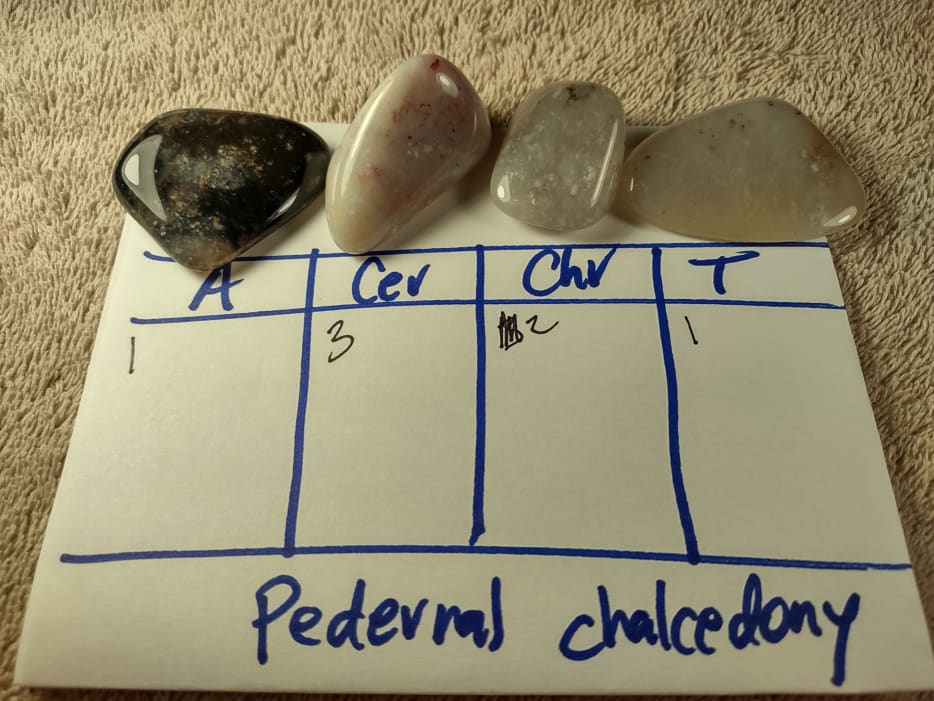  I am processing a lot of this beautiful material after two collecting trips to Cerro Pedernal. I like it, but it's kind of weird stuff. When sawing off bad parts, of which there are many, there is a lot of fine chipping around the blade cuts as if this material is not strong and kind of brittle. Yet, when dropped, a piece rarely breaks which doesn't seem to fit a brittle material. I've never seen a conchoidal fracture in a single piece--which is extremely odd to me since this was a very important lithic material for tools made by original peoples according to several archeological papers. The combination of all those characteristics makes this material unique to me and kind of puzzling. I don't have a way to test for Moh's hardness, but I suspect this is slightly softer than the 6.5-7.0 of non-specialized chalcedonies. This is based upon its feel in my hands in the saw and how it reacts to coarse grind. A is predicted for all non-specialized chalcedonies, but nothing was found in literature for this one. I'm going to predict that not too many people in the forum are familiar with this material. Never have I seen it listed for sale. It's rather common and easy to find in it source location. One of the things that makes it appealing in my opinion are translucent and transparent areas in some pieces that occur in kind of an unpredictable way. For example, that dark piece on the left has regions that are opaque, some that are translucent, and some that are transparent--all in the same rock. That's why in some photos the dark color sort of looks like it's within the rock. Yet I have pieces that look at first almost just like that one, but the dark part is all the way to the surface and the entire rock is opaque or nearly so. |
|
Deleted
Deleted Member
Member since January 1970
Posts: 0
|
Post by Deleted on Jul 21, 2022 8:08:02 GMT -5
BobThanks for answering my question Bob! That chalcedony is really pretty and it does sound puzzling.
|
|
|
|
Post by Bob on Jul 21, 2022 10:11:27 GMT -5
|
|
Deleted
Deleted Member
Member since January 1970
Posts: 0
|
Post by Deleted on Jul 21, 2022 11:46:59 GMT -5
Bob I really enjoy mookaite. Haven’t tumbled any yet but looking forward to it. Yours looks great!
|
|
|
|
Post by Bob on Jul 21, 2022 16:52:05 GMT -5
A few people have asked me me about why didn't I include zinc oxide and titanium oxide.
The reason I didn't include tit, tripoli, red rouge, and pumice is because my reading gave me the impression they were specialty polishes to use only for very soft materials that are rarely used in rotary tumbling.
The reason I didn't include boron carbide, boron nitride, and diamond is because my reading gave me the impression they were specialty polishes to use only for very hard materials that are rarely used in rotary tumbling.
I also didn't include M-5, but I can't remember why.
As to zinc, I don't think I had ever heard of it, but recently someone told me that is the polish that ships with Thumler's tumblers. Is it a widely used polish such that it being missing from this comparison is an oversight I should not have made?
|
|
|
|
Post by parfive on Jul 21, 2022 17:17:55 GMT -5
As to zinc, I don't think I had ever heard of it, but recently someone told me that is the polish that ships with Thumler's tumblers. Bob, Thumler’s polish was—and probably still is—titanium dioxide. Check your toothpaste label. : ) |
|
|
|
Post by Bob on Jul 21, 2022 21:17:07 GMT -5
I thought that it sounded familiar.
Maybe it's the white pigment in paints too.
Could have sworn though that someone had mentioned what I wrote about ZO.
|
|


